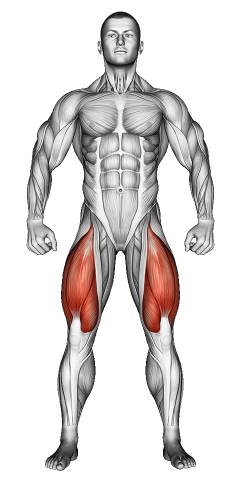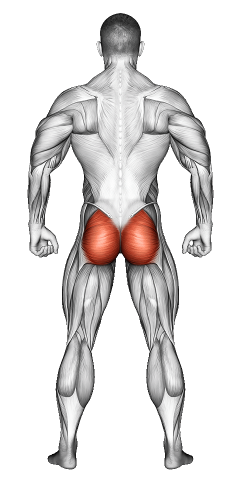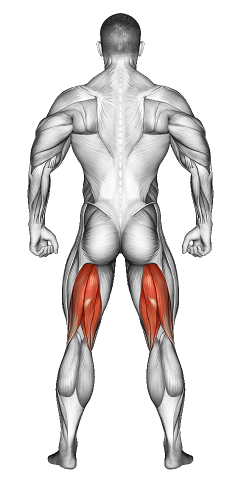Reverse Lunges: Video Tutorial & Exercise Guide

Written By: Claude Michael
Updated: Dec 26, 2024
| Workout | Reverse Lunges |
| Primary Muscle Group | Quads |
| Secondary Muscle Group | Glutes, Hamstrings |
| Equipment Required | Bodyweight |
| Force Type | Bodyweight |
| Mechanics | Compound |
| Exercise Type | Lower Body Strength |
| Difficulty | Beginner to Intermediate |
Reverse Lunges: Video Tutorial & Exercise Guide
- 1.Reverse Lunges: Muscle Groups
- -1.1Primary Muscle Group
- -1.2Secondary Muscle Group
- 2.Reverse Lunges: Step-by-Step Guide
- 3.Reverse Lunges: Overview
- 4.Reverse Lunges: Benefits
- 5.Reverse Lunges: Pro Tips & Advanced Techniques
- 6.Reverse Lunges: Progression Plan
- 7.Reverse Lunges: Frequently Asked Questions (FAQs)
Secondary Muscles Group
Reverse Lunges: Step-by-Step Guide
- Step 1: Stand tall with your feet hip-width apart. Roll your shoulders back, engage your core, and keep your chest up. You’re setting up a strong base for stability.
- Step 2: Step your right foot back into a lunge. Bend both knees, lowering your back knee toward the ground. Keep your front thigh parallel to the floor. Hold your chest up and engage your core.
- Step 3: Push through your left heel and bring your right foot forward, returning to the starting position. Squeeze your glutes and control the movement as you rise.
- Step 4: Switch legs, stepping back with your left foot. Repeat the same movement. Focus on moving with control and maintaining balance as you alternate sides.
- Step 5: Inhale as you step back, and exhale as you step up. Use your breath to keep a steady rhythm and stay focused.
- Step 6: Repeat for the desired number of reps on each leg. Keep your form tight, stay balanced, and make each lunge count.
Reverse Lunges: Overview
Reverse Lunges give your legs, glutes, and core a solid workout. This move builds strength, stability, and balance. Stepping backward instead of forward reduces knee strain, making reverse lunges a great option for strengthening your lower body without stressing your joints.
Reverse Lunges: Benefits
Reverse Lunges build strength in your quads, hamstrings, glutes, and core. They improve balance and stability, making them a functional and effective lower-body exercise. With reverse lunges, you can protect your knees while still working your legs hard.
Reverse Lunges: Pro Tips & Advanced Techniques
- Keep Your Core Engaged: Focus on tightening your core to stay stable and protect your lower back.
- Move with Control: Take your time with each lunge. Avoid rushing, which can throw off your balance.
- Watch Your Knee Alignment: Keep your front knee in line with your ankle to target your leg muscles safely.
- Breathe Consistently: Inhale as you step back, exhale as you return. Steady breathing helps you stay focused.
Reverse Lunges: Progression Plan
Beginner
Intermediate
Advanced
Reverse Lunges: Frequently Asked Questions (FAQs)
What muscles do Reverse Lunges work?
+Reverse Lunges target your quads, hamstrings, glutes, and core, giving you a balanced lower-body workout.
Can I add Reverse Lunges to any workout?
+Yes! Reverse lunges fit well into leg days, lower body circuits, or full-body workouts.
Are Reverse Lunges good for beginners?
+Absolutely! Reverse lunges are easy to learn, and you can start with bodyweight until you feel comfortable.
How can I make Reverse Lunges easier?
+Use a wall or stable surface for support if needed, and start with smaller steps back as you build strength.
How often should I do Reverse Lunges?
+Include reverse lunges 2-3 times a week as part of your leg workout.
What mistakes should I avoid?
+Avoid letting your front knee move past your toes. Keep your chest up, engage your core, and focus on a steady, controlled movement for maximum benefit.
Share
Don’t Wish for It, Work for It – Join the FlexXP Newsletter Today!
Thank you for signing up for the FlexXP Newsletter!
This site is protected and the Google Privacy Policy and Terms of Service apply.


